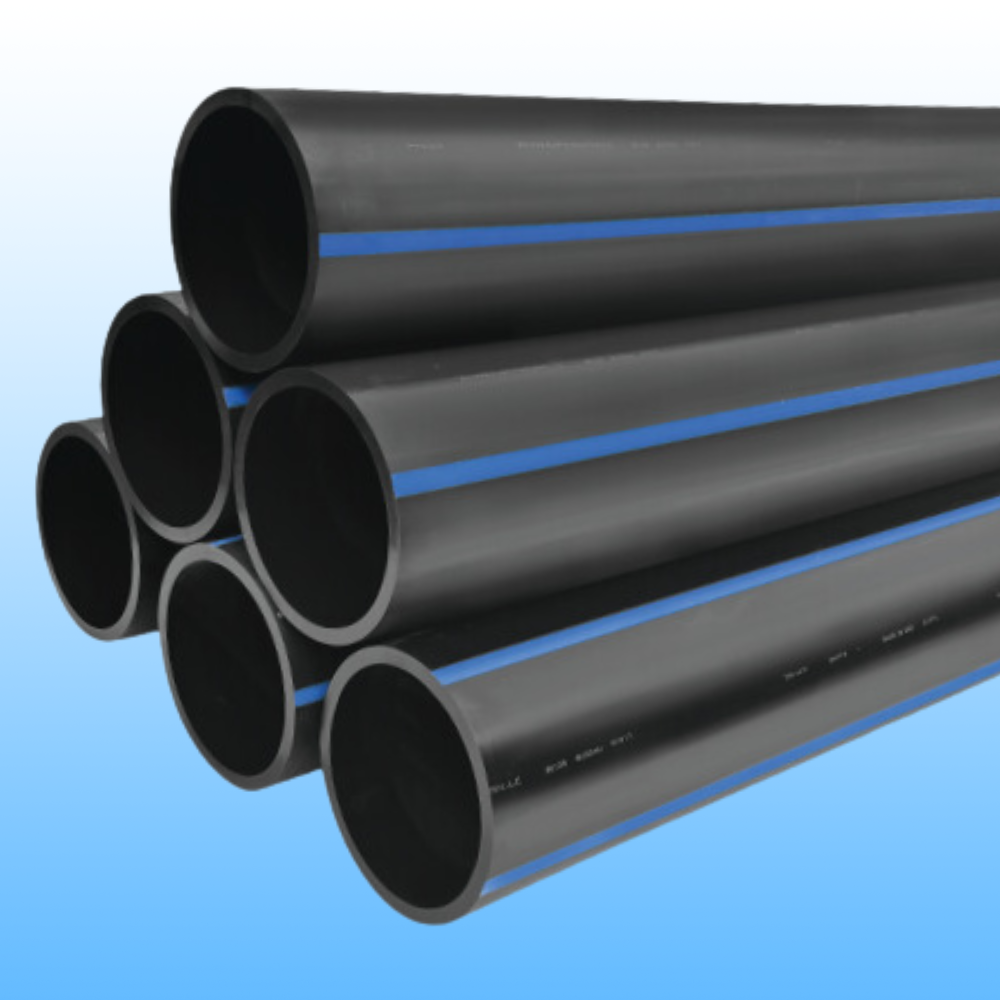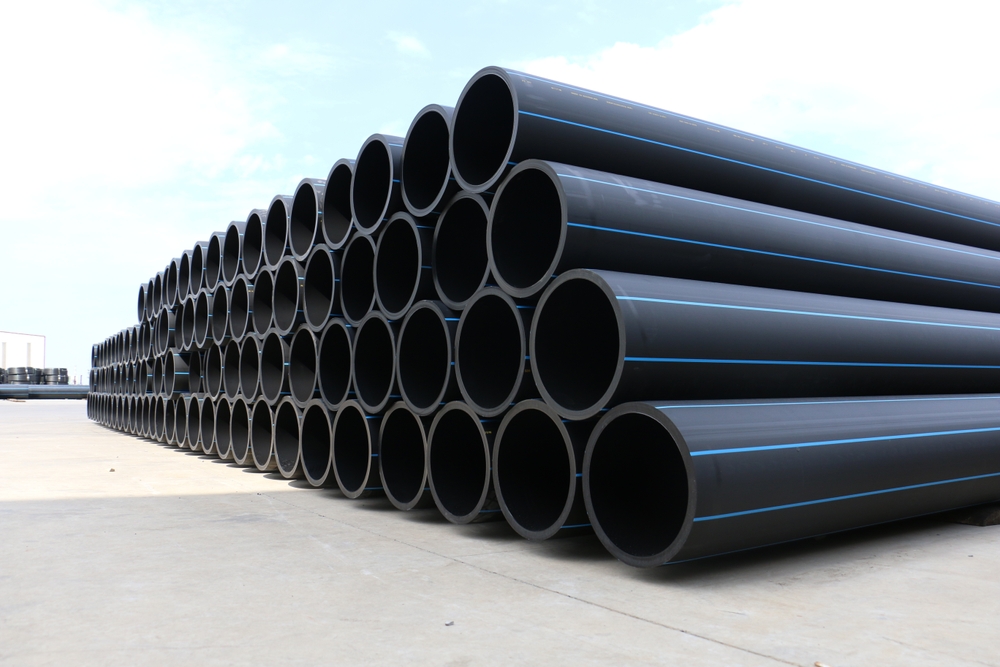How American Plastics HDPE Pipe for Oilfield Supports Energy Infrastructure
The Essential Actions for Successful Setup of HDPE Pipe in Your Next Job
Effective installation of HDPE pipeline calls for cautious planning and implementation. Key steps consist of evaluating job needs, preparing the website, and choosing proper joining methods. Each phase plays a vital function in making sure the integrity and performance of the pipeline. Understanding these necessary steps can greatly affect the general success of the project - American Plastics HDPE Pipe Manufacturing. However, the nuances of each action may hold the trick to conquering usual challenges encountered throughout installation
Comprehending the Perks of HDPE Pipeline
High-density polyethylene (HDPE) pipe provides many benefits that make it a favored option for numerous applications. Its high resistance to corrosion and chemicals assurances longevity sought after settings, substantially expanding the life expectancy of installments. Furthermore, HDPE's adaptability enables easier setup, especially in tough surfaces, as it can bend without breaking. The light-weight nature of HDPE pipeline simplifies transportation and handling, minimizing labor prices during setup.
HDPE pipeline is understood for its low friction coefficient, which improves fluid circulation and lessens energy usage. Its seamless building reduces the threat of leakages, contributing to better source administration and environmental management. Furthermore, HDPE is recyclable, straightening with sustainable techniques and decreasing environmental influence. On the whole, the mix of toughness, versatility, and eco-friendliness makes HDPE pipeline a remarkable choice for a wide variety of projects, from water distribution to commercial applications.
Planning Your HDPE Pipeline Setup
When planning an installment of HDPE pipeline, mindful consideration of several crucial elements is vital to secure a successful task. Task supervisors should evaluate the details demands of the pipeline, including the planned use, flow prices, and environmental conditions. Understanding these parameters will certainly direct the choice of proper pipe dimensions and material quality.
Next, timelines need to be established, considering purchase routines and any kind of potential delays. Sychronisation with regional authorities for permits and regulatory compliance is likewise important. In addition, a comprehensive budget ought to be prepared, including all prices related to materials, labor, and equipment.
Lastly, it is necessary to involve a certified team experienced in HDPE pipeline installment. Their proficiency will certainly aid minimize risks, guarantee adherence to industry requirements, and ultimately add to the project's success. Detailed preparation lays the groundwork for a smooth installment process and lasting efficiency of the HDPE piping system.
Preparing the Site for Installation
Proper site prep work is necessary for the successful installment of HDPE pipe. Before installment begins, the website must be thoroughly assessed to guarantee it satisfies all necessary needs. This includes surveying the ground for existing frameworks, energies, and prospective dangers that can restrain the installation procedure.

Appropriate altitude and positioning ought to be established to preserve a regular gradient for drainage objectives. Proper water drainage around the installation site is additionally essential to stop water accumulation, which can result in problems down the line.
Methods for Joining HDPE Pipelines
Accomplishing a reputable link between HDPE pipes is vital for making certain the honesty and long life of the installation. Numerous techniques exist for joining these pipelines, each fit for different task demands. Combination welding is one of one of the most usual approaches, using heat to bond the pipe ends with each other, developing a seamless and durable link. This method can be further classified into outlet fusion and butt fusion, depending upon the pipe configurations.
Mechanical installations are another alternative, utilizing clamps and threaded ports to sign up with areas of HDPE pipeline. While usually faster to mount, they might call for extra upkeep in time. Electrofusion is a specific technique that includes utilizing electric existing to warm and fuse the pipelines via specially designed installations, making certain a solid bond. Choosing the ideal signing up with technique is vital, as it directly impacts the overall performance and integrity of the HDPE piping system in the intended application.
Testing and Assessment of Installed Pipes
The link screening and assessment of installed HDPE pipes are vital to ensuring their capability and long life. This process incorporates aesthetic evaluation techniques, stress screening approaches, and leakage detection treatments to identify potential problems. By using these methods, professionals can validate the honesty of the installation prior to it is taken into use.
Aesthetic Assessment Techniques
Employing effective aesthetic examination methods is crucial for ensuring the honesty of installed HDPE pipes. Assessors must systematically check out all visible sections of the pipeline to recognize any indications of damages, misalignment, or improper installment. Trick indications to examine consist of joint integrity, surface irregularities, and links. Inspectors might make use of devices such as amplifying glasses or cameras to improve exposure and information. It is important to look for signs of ecological tension, such as distorting or excessive bending, which might jeopardize efficiency. Regular documents of searchings for enables tracking modifications with time and assists overview necessary repair work. By sticking to recognized aesthetic examination methods, project groups can notably decrease the threat of future failures and ensure lasting dependability of the piping system.
Pressure Testing Methods
Visual assessment offers as an initial procedure, yet it is not sufficient by itself to assure the performance of set up HDPE pipes. Stress screening techniques are necessary for making certain the honesty of these systems. Usually, hydrostatic screening is employed, where the pipes are full of water and subjected to pressure degrees above the designated operating pressure. This method helps identify weak points or prospective leaks. Pneumatically-driven screening can additionally be used, although it lugs better risks as a result of the compressibility of air. No matter the method picked, adhering to sector standards and security protocols is essential. After performing pressure tests, comprehensive documents is needed to verify the outcomes and verify that the installation satisfies all operational requirements prior to continuing to the following phase of the task.

Leak Discovery Procedures
Exactly how can one assure that mounted HDPE pipelines are without leaks? Efficient leakage detection procedures are vital to secure the stability of the system. Aesthetic assessments should be done, looking for indications of water build-up or dirt erosion around pipeline joints. Following this, stress testing can verify the system's stamina. An usual approach is the hydrostatic examination, where water is introduced under stress, keeping an eye on for drops that suggest prospective leakages. Additionally, progressed modern technologies, such as look at this web-site acoustic sensors or infrared thermography, can identify leakages that might not be noticeable. Normal surveillance and upkeep more add to the durability of HDPE pipelines, guaranteeing they remain leak-free throughout their operational lifespan. Correct documents of these procedures is important for conformity and future referral.
Maintenance Tips for Long-Term Performance
To guarantee the long life of HDPE pipelines, establishing a routine examination timetable is essential. This positive approach enables the early discovery of potential problems, reducing pricey fixings. Furthermore, applying correct cleaning methods will certainly assist maintain peak performance and dig this stop accumulation that can impact functionality.
Normal Inspection Arrange
HDPE pipes are recognized for their durability and resistance to corrosion, establishing a normal assessment timetable is necessary for ensuring their long-term performance. Regular evaluations help recognize prospective problems such as leaks, joint integrity, and ecological impacts that may impact the pipe's performance. It is advised that inspections happen at the very least biannually, or a lot more frequently in environments with extreme problems. hdpe pipe suppliers Midland TX. During these evaluations, visual checks should be carried out to detect signs of wear or damage. Additionally, utilizing technology such as ultrasonic testing can supply further understandings right into the pipe's condition. By executing a structured evaluation routine, task supervisors can proactively deal with troubles, therefore extending the life-span of HDPE pipes and keeping system effectiveness
Correct Cleaning Techniques
Appropriate cleansing methods play a vital duty in maintaining the long-term performance of HDPE pipelines. Routine cleaning stops the buildup of particles, sediment, and biofilm, which can bring about blockages and minimized circulation efficiency. Operators ought to use approaches such as high-pressure water jetting or foam cleaning to efficiently remove contaminants without harming the pipeline surface. It is essential to avoid using harsh chemicals that may break down HDPE product. In addition, arranged upkeep checks should consist of visual evaluations for any signs of wear or damages. Correctly trained personnel must perform these cleaning processes, making sure conformity with security and environmental guidelines. By carrying out these techniques, the life expectancy of HDPE pipelines can be considerably extended, guaranteeing suitable efficiency throughout their functional life.
Often Asked Questions
What Are the Ecological Influences of HDPE Pipeline Production?
The environmental impacts of HDPE pipe manufacturing consist of greenhouse gas discharges, power consumption throughout manufacturing, prospective plastic air pollution, and difficulties in recycling. However, HDPE's durability and resistance to deterioration can mitigate some environmental concerns.
Exactly How Does HDPE Pipe Contrast to Various Other Products?

What Equipment Are Essential for HDPE Pipe Installment?
Vital devices for HDPE pipe installation include a combination machine, pipe cutters, shovels, gauging tape, and security gear. Proper equipment guarantees effective, safe handling and installment, adding to the project's general success and integrity.
Are There Any Particular Regulations for HDPE Pipeline Installment?
Specific guidelines for HDPE pipe installment vary by area, often governed by local, state, or government codes. Compliance with these policies warranties security, environmental security, and performance, making adherence vital for effective project end results.
Can HDPE Pipes Be Recycled After Use?
Yes, HDPE pipelines can be reused after use. Their polycarbonate nature permits for reprocessing, making them ideal for recycling into new items. This sustainability element adds to ecological preservation and promotes circular economic situation techniques in building and construction.